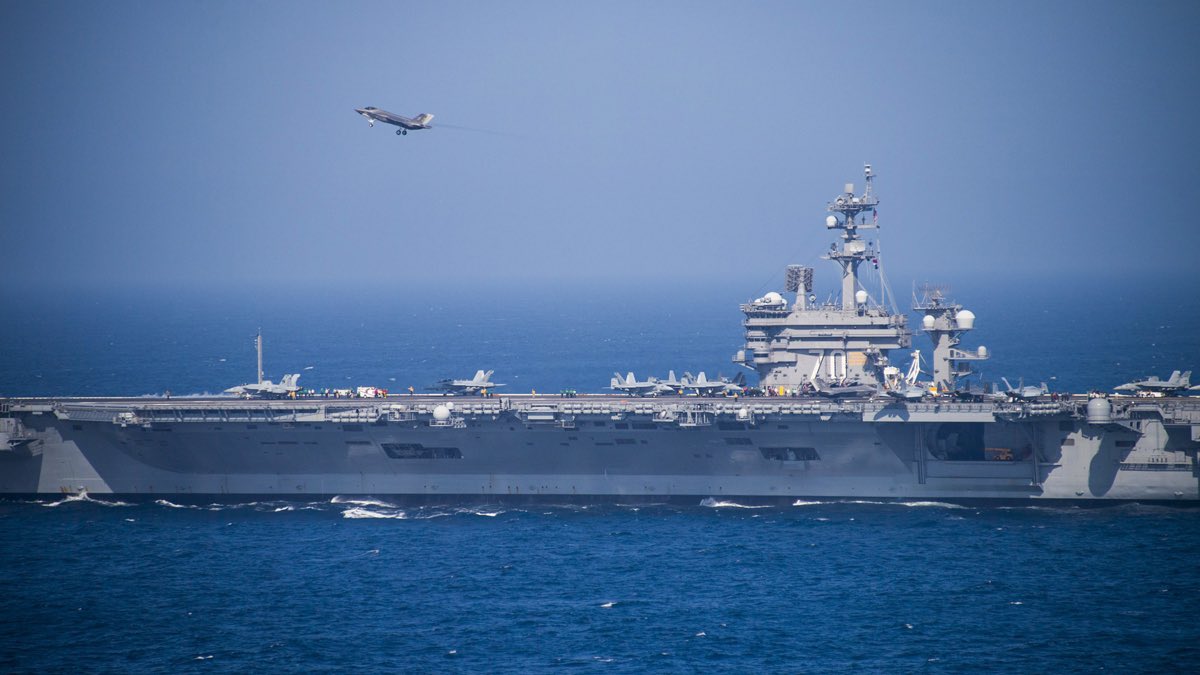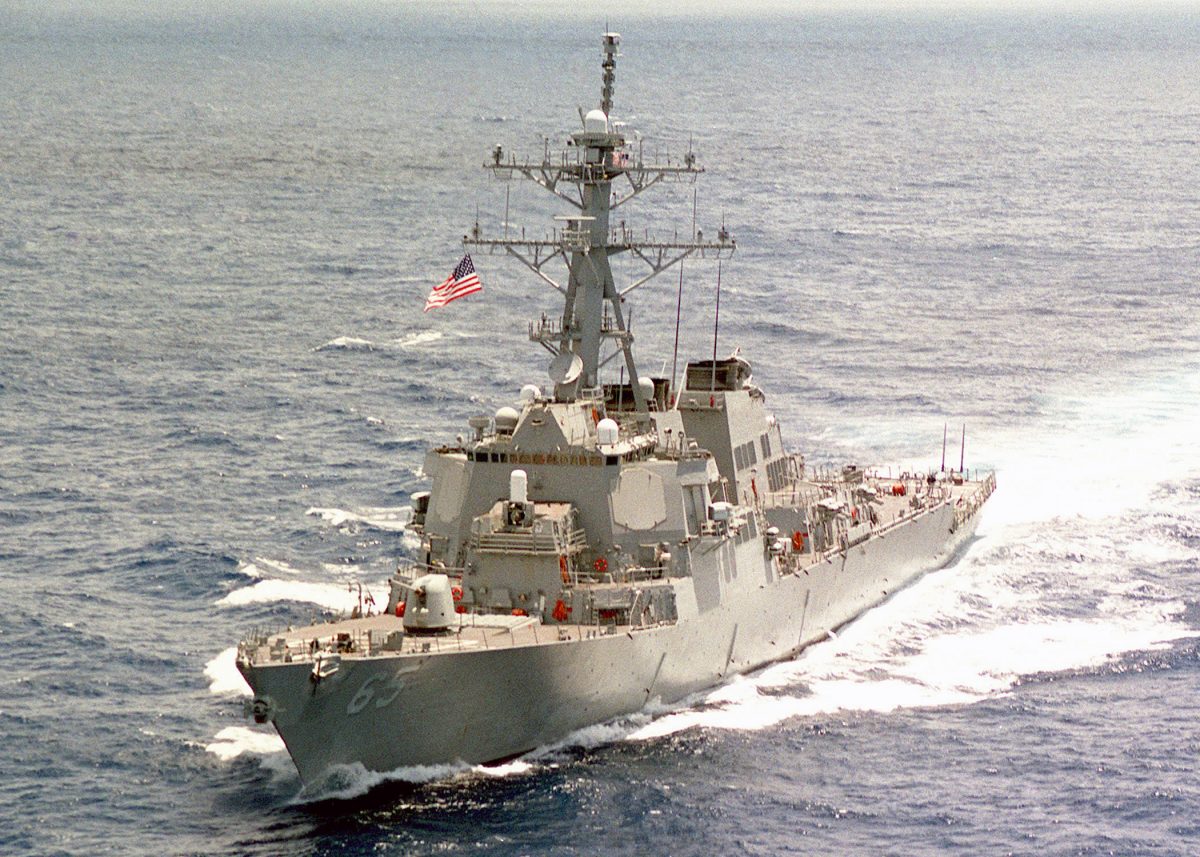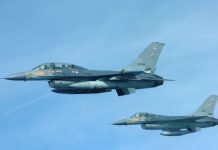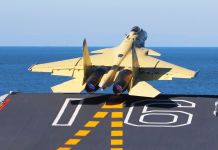The US Navy will need a fleet of more than 500 ships to fulfill its commitments under the soon-to-be-released National Defense Strategy, Chief of Naval Operations Adm. Mike Gilday was quoted as saying by USNI News recently.
Coming from a top US military official, this remark assumes significance against the backdrop of the looming threat from China.
“I’ve concluded – consistent with the analysis – that we need a naval force of over 500 ships,” Gilday said during the WEST 2022 conference, co-hosted by AFCEA and the U.S. Naval Institute.
Earlier on February 18, US Defense Secretary Lloyd J. Austin said the new National Defense Strategy “will certainly address major threats to our security…It’ll also address major threats to the international rules-based order”, in an oblique reference to China and Russia.
“We need 12 carriers. We need a strong amphibious force to include nine big-deck amphibs and another 19 or 20 [LPDs] to support them. Perhaps 30 or more smaller amphibious ships to support Maritime Littoral Regiments… to 60 destroyers and probably 50 frigates, 70 attack submarines and a dozen ballistic missile submarines to about 100 support ships and probably looking into the future about 150 unmanned,” (sic) Adm. Gilday said.
A total of 513 ships would be deployed, with 263 manned combatants, 100 logistics and supply ships, and 150 unmanned vessels. The number would include Littoral Combat Ships, Gilday subsequently told reporters.
He said that the ongoing force structure evaluation mandated by Congress will shape the 2024 fiscal year budget. However, as the Pentagon works on its new national defense strategy, the FSA’s details have been kept mostly under wraps.
“We’re going through another force structure assessment right now, but based on the hard work we’ve done over the last five or six years we’re thinking about how we would fight,” Gilday said. “How would we fight differently in terms of a wide, vast ocean like the Pacific?”
Reshaping Navy’s Surface Fleet
There have been constant calls to reshape the US Navy. In 2020, a report by the Center for Strategic and Budgetary Assessments stated that the Navy’s surface fleet is completely misaligned to meet the threats the military says it must counter in the 21st century, and it’s not correctly constructed to pursue its own strategy of “distributed maritime operations”.
To counteract the anti-ship missile threat, the report proposed that the Navy should drastically boost its attention on bolstering the offensive punch of its surface combatants, as well as fully embrace advancements in electronic warfare and laser weaponry.
The Navy’s future force structure has been in disarray for the past three years, undergoing various fleet assessments whereas the Department of the Navy and Pentagon leadership experienced unparalleled churn in 2019 and 2020.

The Trump administration released an ambitious fleet plan at the end of its term. Shortly after President Joe Biden took office, the plan was shelved, causing the Navy and the Office of the Secretary of Defense to reassess the force under new Pentagon leadership and amid the threat of stagnant budget expenditure.
The Navy has embarked on an intense testing campaign over the last year to fine-tune the new Distributed Maritime Operations [DMO] concept, which will integrate crewed and unmanned ships and aircraft to function in harmony across large distances in the Pacific.
Large Scale Exercise 2021, notably, evaluated DMO across three combatant commands in a networked operation using live and virtual exercises. The Navy and Marine Corps are also running operational carrier strike and amphibious groups through their trials, putting the core concepts to the test.
Likewise, small unmanned vessels in the US 5th Fleet are being tested to assess how well the Navy plans to use them in the future.
The EurAsian Time had recently reported that a “super squadron” of roughly 20 F-35C stealth fighters could be added to the US Navy’s carrier air wing in the future to better counter the modern threats.
The ongoing study looks at the requirements for major amphibious ships as well as the Light Amphibious Warship (LAW), which the Marine Corps plans to use to transport Marines around islands and shorelines in the Indo-Pacific.
LAW is usually designed to be able to dock itself so that Marines may be deployed quickly to the beach. Whereas the Marine Corps is pushing for LAW, the platform would be purchased with money from the Navy’s shipbuilding budget.
Concerned about the rise of China’s influence, US forces are concentrating on increasing their strength and capabilities; the latest revelation by Gilday also hinted towards this.

US National Defense Strategy
People interested in the new National Defense Strategy can see some of it in play as the United States and its allies face Russian aggression in Eastern Europe, Secretary of Defense Lloyd J. Austin said in Warsaw on February 18.
He spoke during a press conference in Warsaw following meetings with Polish officials. They discussed NATO and bilateral efforts in Eastern Europe, according to a DoD release.
Austin said he is proud of the work that has been done on the document, but he is not yet ready to release it. He did give some hints about the strategy and the idea of integrated deterrence that is a driving force behind it.
The National Defense Strategy “will certainly address major threats to our security,” he said. “It’ll also address major threats to the international rules-based order.”
Integrated deterrence is a driving idea for the document. It “will be a key piece of that new strategy,” Austin said. “Integrated deterrence means using all of the capabilities in all warfighting domains: Air, land, sea, space and cyber.”
- Contact the author at ashishmichel@gmail.com
- Follow EurAsian Times on Google News




